Rio de Janeiro: Letting it all hang out
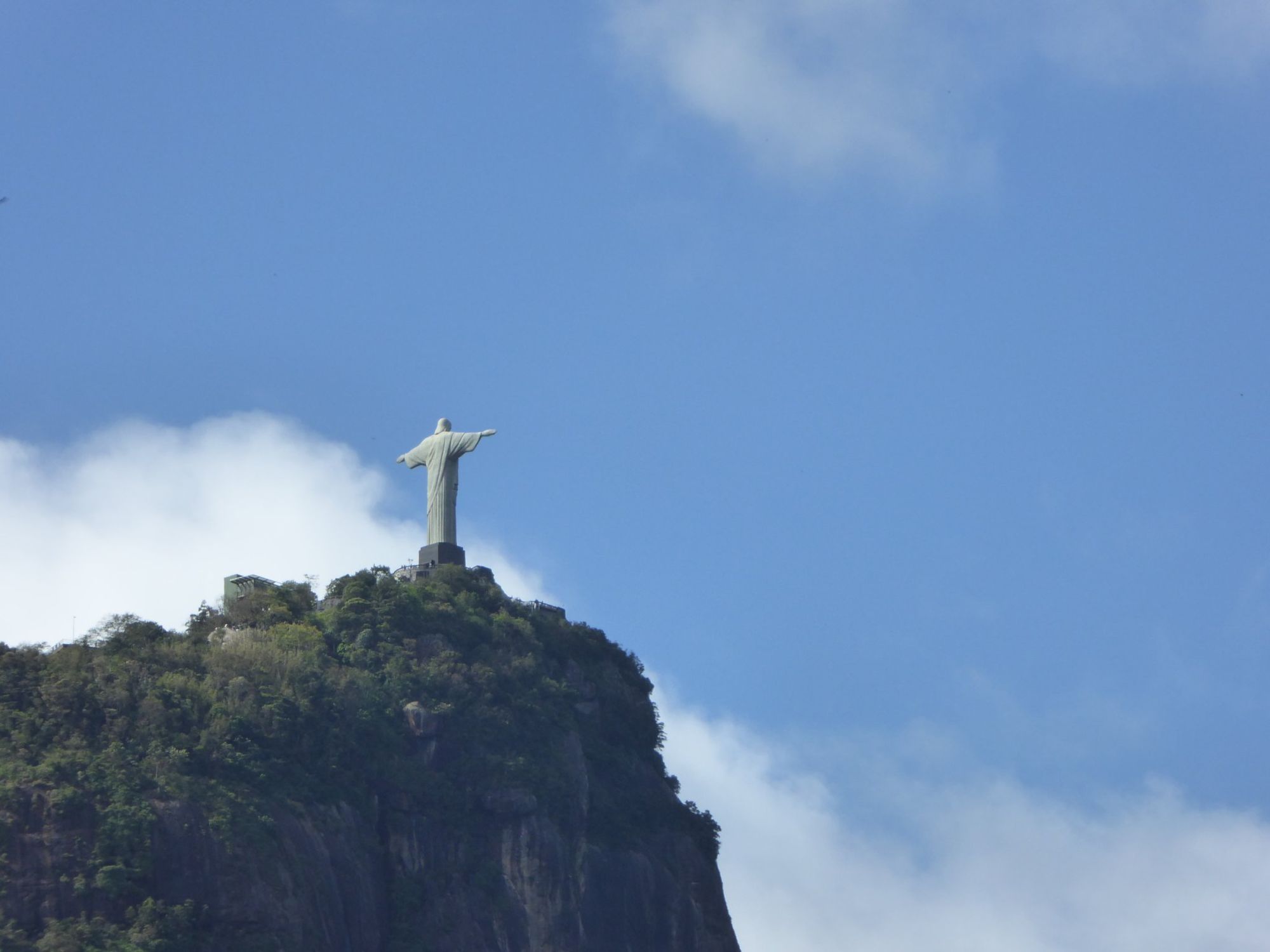
I'm used to going on holiday to places where tourists are told to dress modestly, so as not to offend local sensibilities. But on our first day in Rio, as we walked along the undulating black and white mosaic path that fronts onto Copacabana Beach, I felt like a prude in my t-shirt and shorts, while all around us the cariocas were letting it all hang out.
I was prepared for the sight of scantily-clad locals playing volleyball on the sand, but it seemed like beachwear was suitable attire for just about anything on a Sunday afternoon in Rio. And you don't have to have the body of a swimwear model either. We saw scrawny middle aged men in the supermarket in distressingly tight Speedos; buff young joggers in bikinis; and rotund old ladies with tits like great swinging jackfruits.
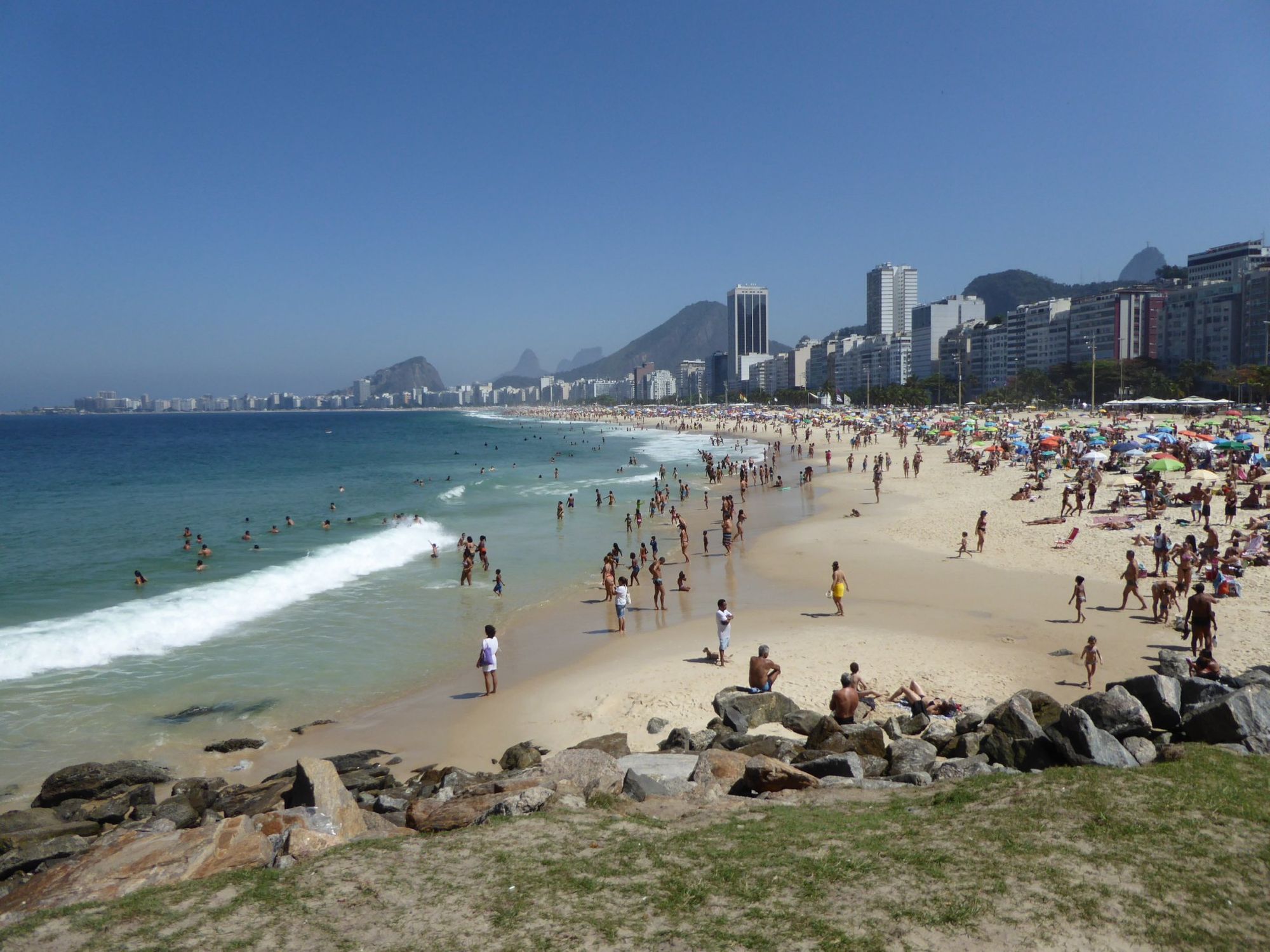
Copacabana is sometimes described as Rio's most democratic beach, a place where everyone goes to hang out at the weekend - old and young, rich and poor, tourists and locals. It's a huge curving stretch of sand, set against a backdrop of high-rise towers and bulging green mountains. As well as the joggers and roller bladers, we saw church groups, jazz dancers and political campaigners out canvassing for the upcoming presidential elections.
We decided to join Free Walker Tours' Copacabana and Ipanema tour to get our bearings, and we learnt from our guide, Marcelo, that Copacabana is a relatively new part of the city. The beach was mostly the preserve of fishermen until the late 19th century, when a tunnel was built to connect Copacabana with downtown Rio, paving the way for the development of a new beachfront neighbourhood.
Next to Copacabana is the more upmarket bairro of Ipanema, a name immortalised by one of Brazil's most famous songs, Garota de Ipanema ('The Girl from Ipanema'). As we rounded a corner and emerged on the promenade running along Ipanema Beach, we were hit with one of the most stunning sunsets I've ever seen. The sun was just starting to dip behind the Dois Irmãos peaks at the far end of the beach, and the spray coming off the sea was floating above the beach like a golden mist.
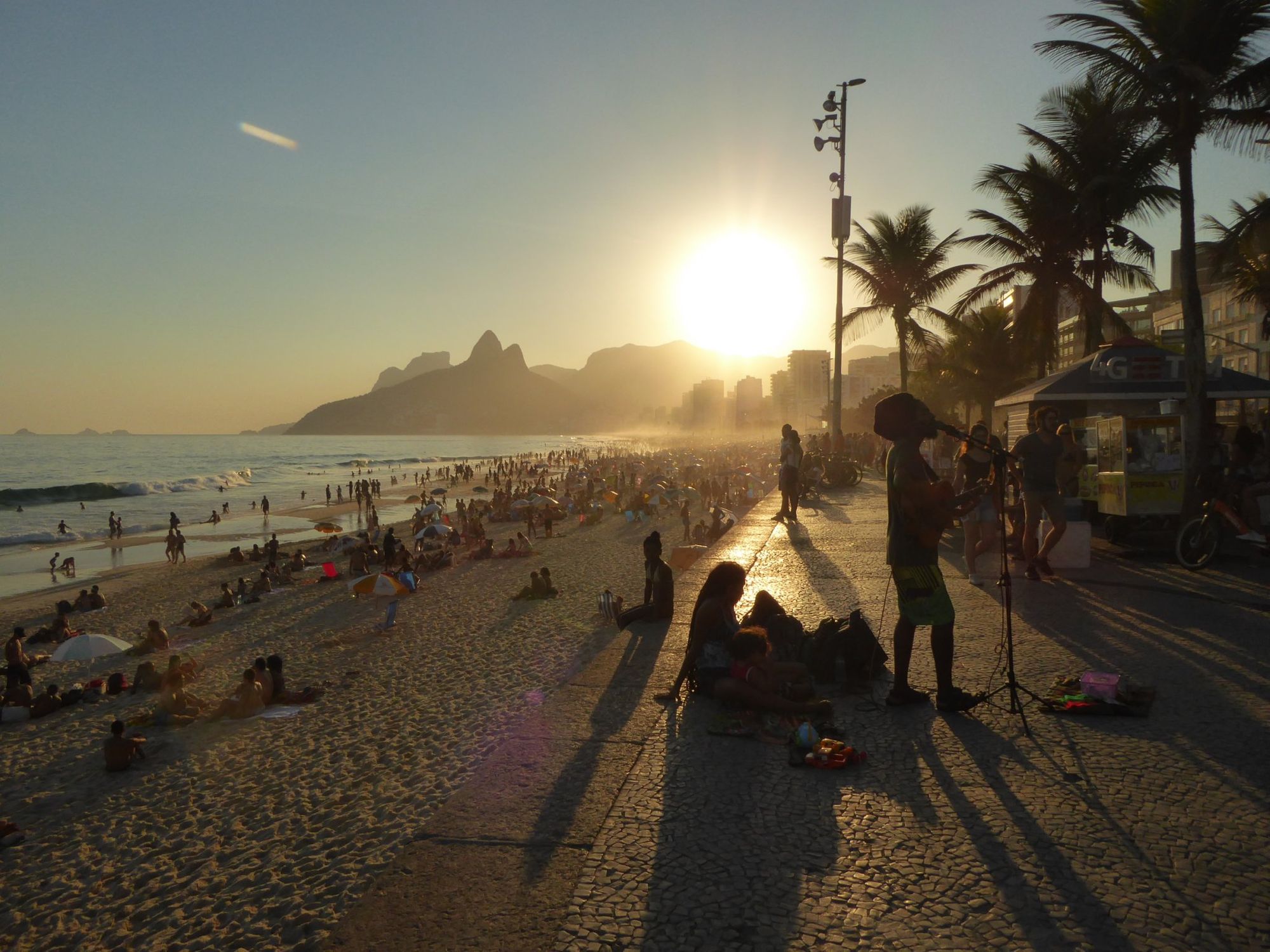
There were also reminders of the stark inequalities that fuel Rio's well publicised problems with violent crime. At the western end of the beach is Leblon, the most exclusive and expensive neighbourhood in Rio, while perched just above it on a hilltop is Vidigal, one of the largest favelas in this part of the city. The government claimed to have 'pacified' many of the favelas in the run-up to the 2014 World Cup and the Rio Olympics, but the security situation has deteriorated again over the last year or so, and Marcelo strongly advised us not to go on any of the favela tours that are still being offered to tourists.
Instead of risking our lives in pursuit of a favela selfie, Marcelo took us to the more peaceful surroundings of the Lagoa Rodrigo de Freitas, a saltwater lagoon next to Copacabana and Ipanema. Here we shared some Brazilian snacks as the sky faded to purple, with the hills of the Tijuca National Park reflected in the tranquil surface of the water.
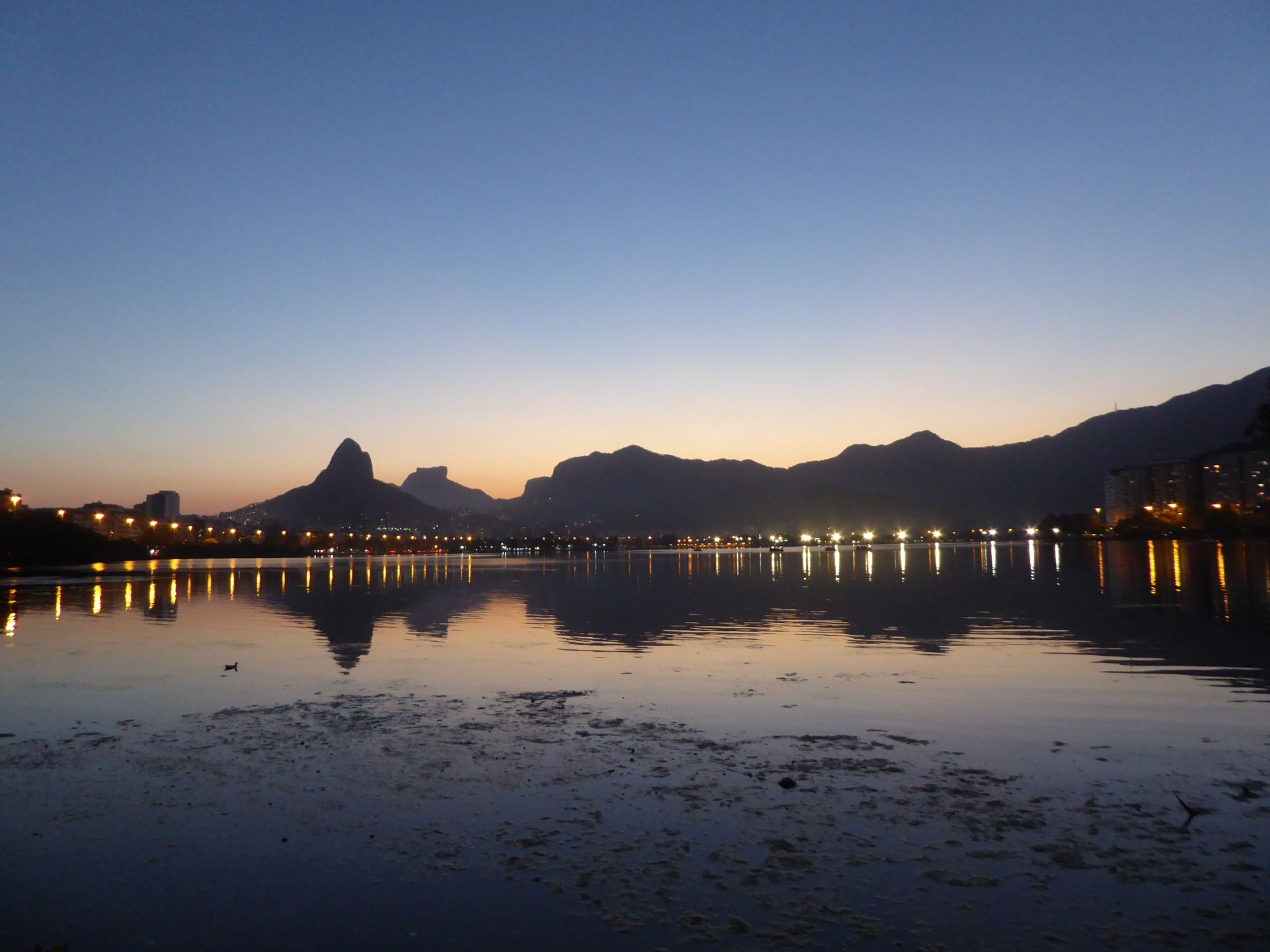
The next day we took the old funicular railway that runs to the top of one of Rio's most famous peaks, the Corcovado. As the train juddered up the mountain we passed through dense foliage, a remnant of the Atlantic rainforest that once covered the hills on which Rio was built, and we strained to see the top of the mountain and its famous resident. About two thirds of the way up we passed through a layer of low-lying cloud and I spotted him for the first time, arms outstretched - Cristo Redentor, Christ the Redeemer, perhaps Rio's most famous sight.
After disembarking from the train we climbed several flights of steps to reach the statue, where there was already a throng of our fellow tourists contorting themselves to bag the perfect picture in front of JC. Some people were lying on the floor while their friends straddled them, photographed from below as they opened their arms wide. Others were swinging selfie sticks around like nunchuks, threatening to take someone's eye out in a frenzy of narcissistic snapping. I found myself wondering whether it was this crazy in the pre-Instagram era, shaking my head and tutting at the state of the world today, before we duly took it in turns to spread our arms and pose for the same photo that everyone else was taking.
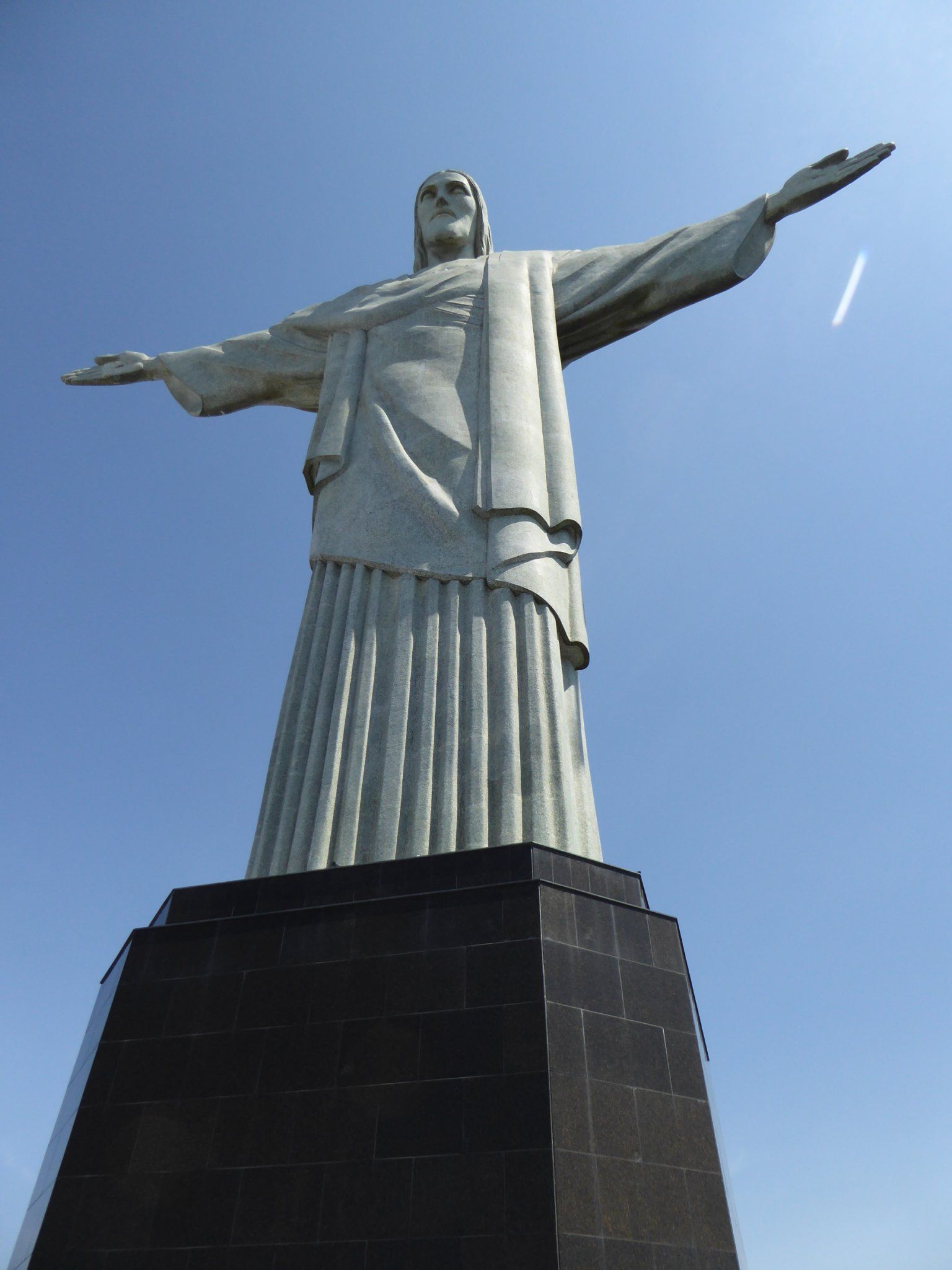
Rio is an incredibly photogenic city, with a spectacular natural setting that is best appreciated from somewhere up high. Our view from Christ the Redeemer was mostly obscured by clouds, but the following day we took the tram from Centro up to the hilltop neighbourhood of Santa Teresa. The tram, or bonde, is the last surviving example of a network that used to run across the city, reminiscent of the yellow trams that clatter up and down the hills of Lisbon. From Centro the bonde crosses the spectacular Arcos de Lapa, a former aqueduct that now carries the tram tracks.
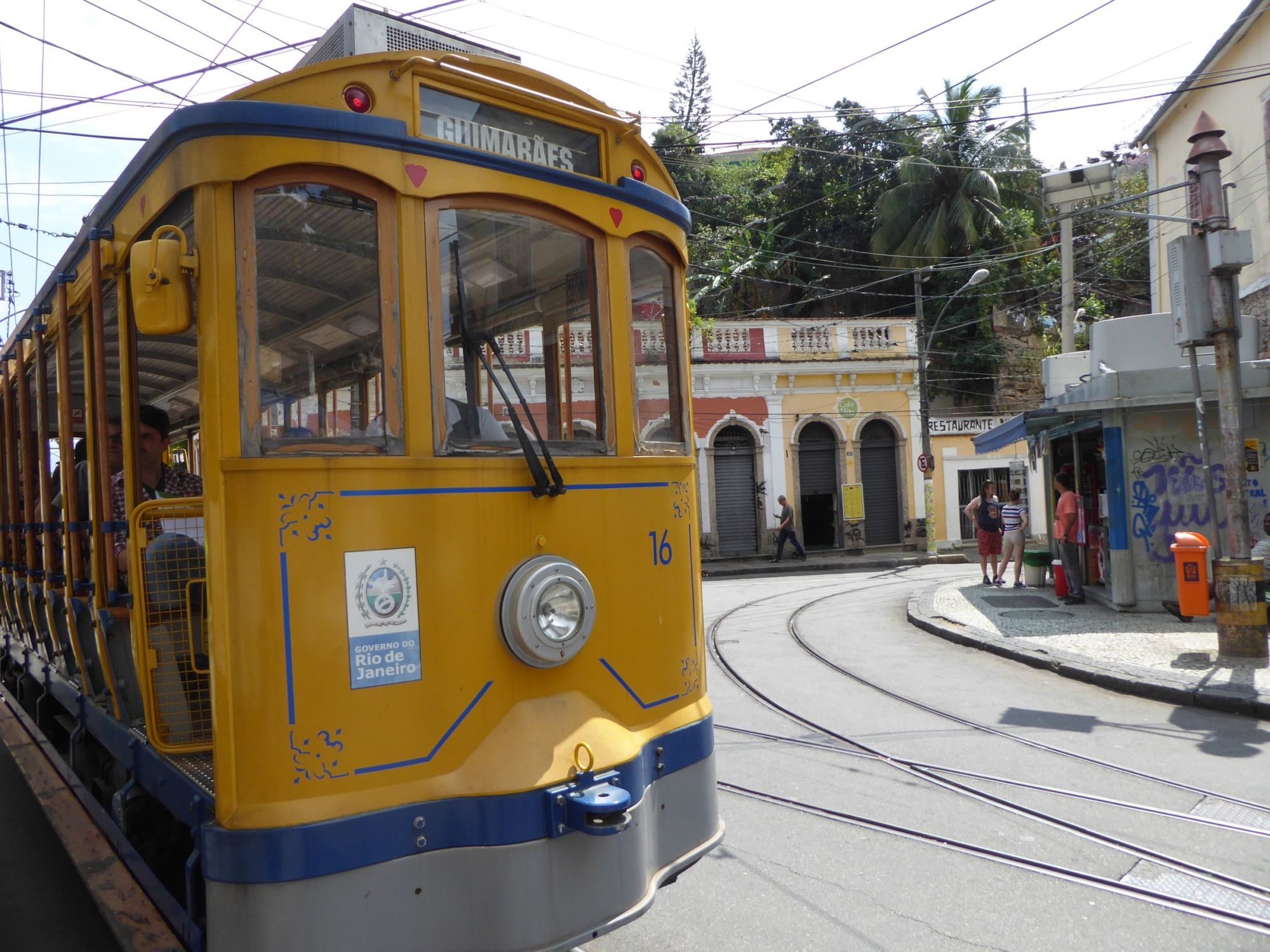
The winding streets of Santa Teresa are lined by elegantly dilapidated old mansions and colonial buildings, exhibiting many of the classic signs of hipster-fuelled gentrification. It also has great views over the city; the best vantage point we found was the Parque das Ruinas, where the shell of an old mansion has been turned into a public park, with a viewing platform where we had an almost 360-degree panorama of Rio. Down below we could see the skyscrapers of Centro and the tram pootling across the Arcos de Lapa; out beyond, the broad sweep of Guanabara Bay surrounded by undulating mountains; and to the south, a favela perched on a hill, with Corcovado and Sugar Loaf Mountain in the distance.
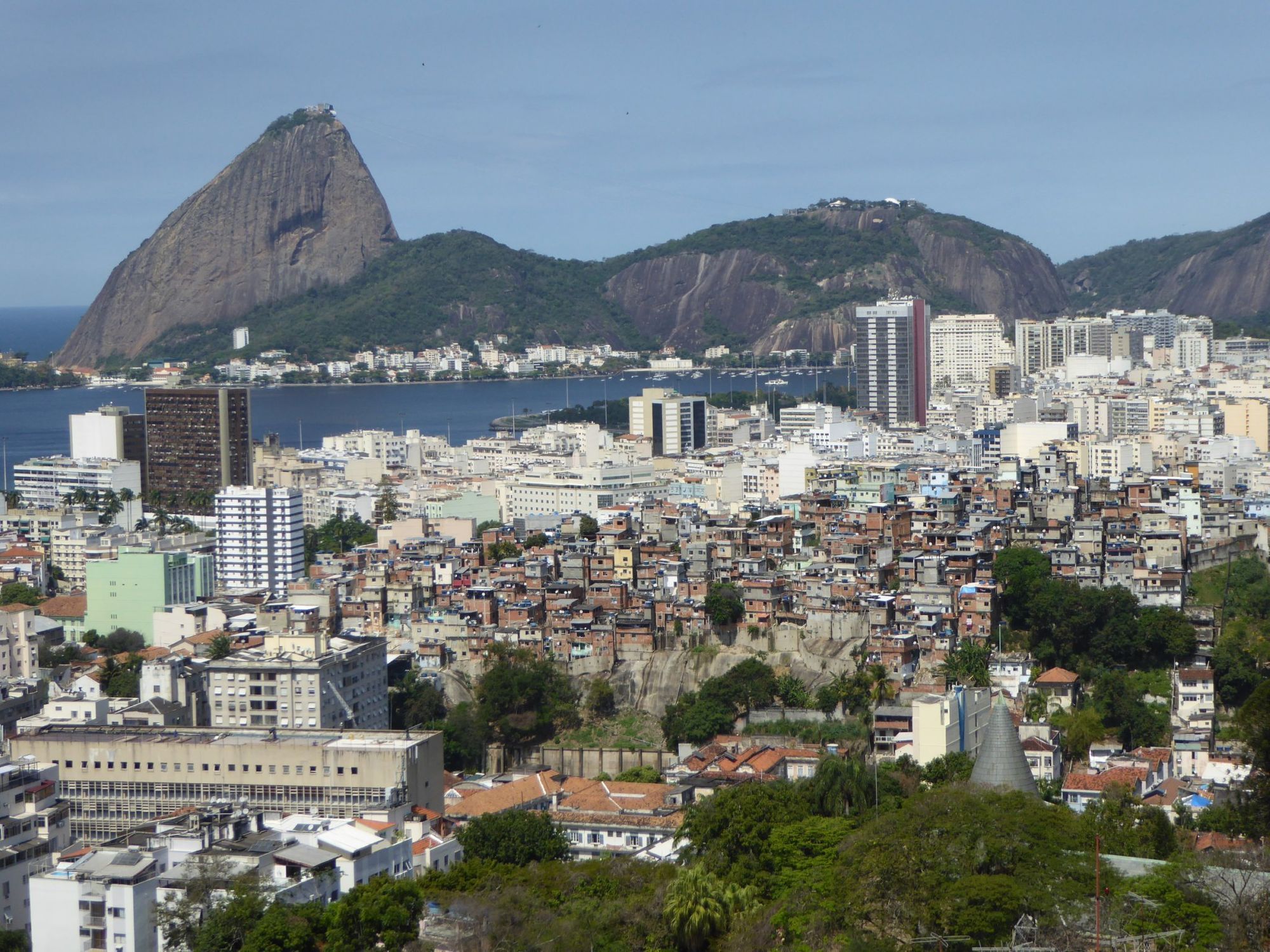
As we made our way back downhill we reached another of Rio's most Instagrammed attractions, the Escadaria de Selarón. This staircase is covered in over 2,000 tiles collected by the Chilean artist Jorge Selarón, and the steps have appeared in music videos including Snoop Dogg's 'Beautiful'. The top of the Escadaria was relatively quiet, but the bottom was packed with the same selfie stick-wielding crowds that we'd seen the previous day at the top of the Corcovado. We decided we preferred the quieter streets of Santa Teresa, and made the thigh-busting climb back up to the top of the hill.
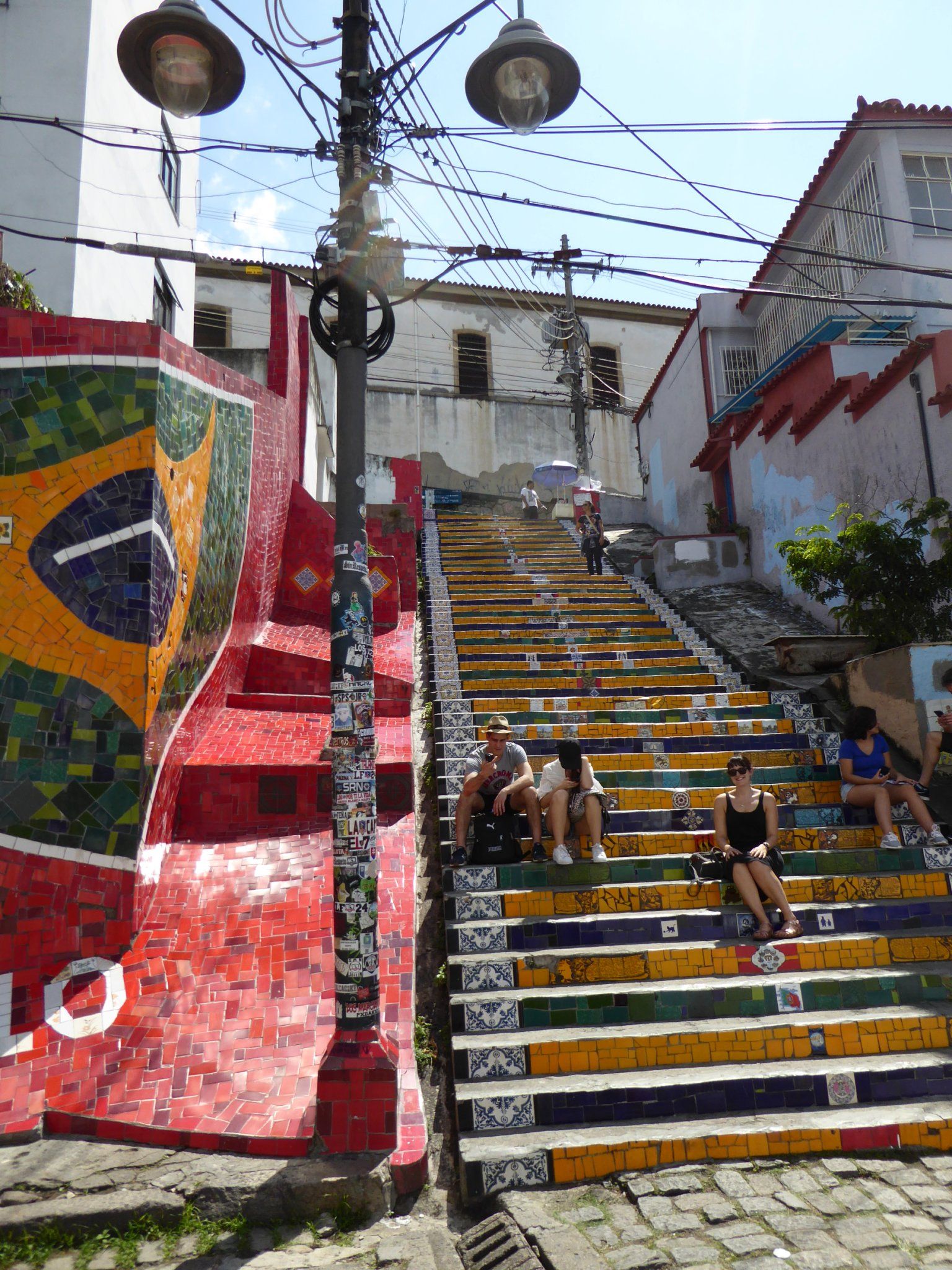
It's been a fantastic start to our trip, and I feel like we've only seen a fraction of what Rio has to offer. The city has also felt pretty safe compared to how it's portrayed in the media, though of course we've only been hanging out in the tourist areas in the south of the city. Tonight is our last night here, then we're heading down the Costa Verde to Ilha Grande and Paraty for a week, before tackling an even bigger city, São Paulo, so we still have plenty more of Brazil to come...

